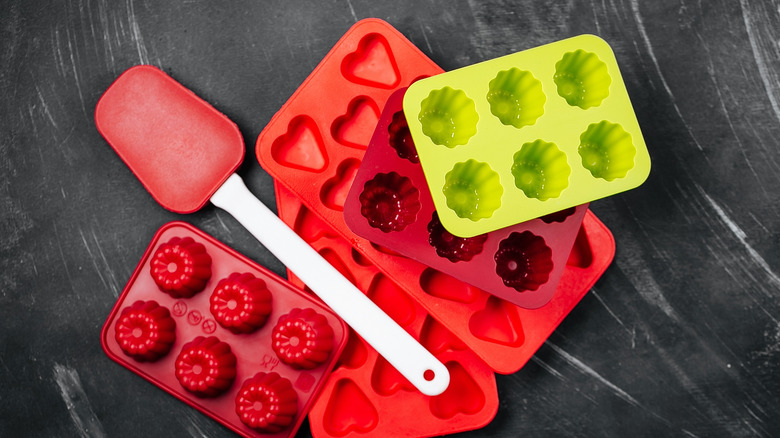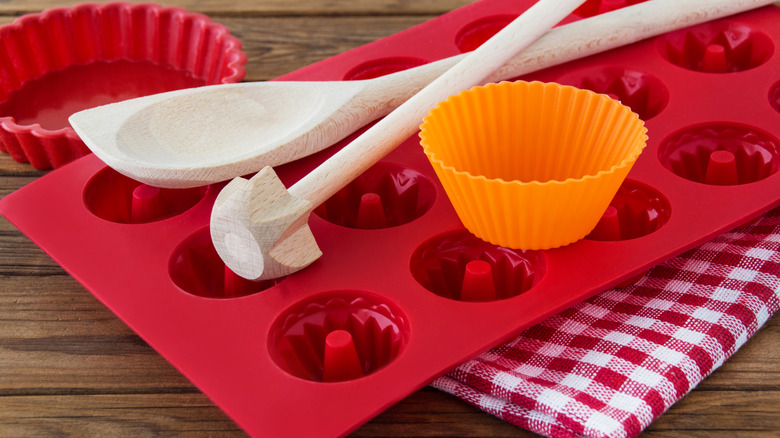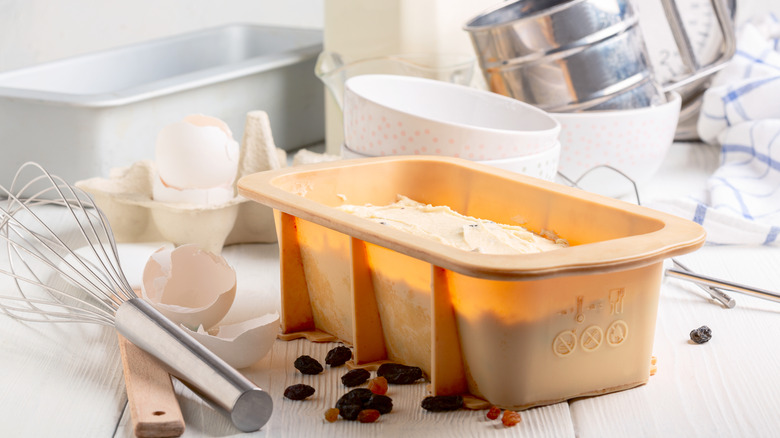Why Your Oven Is The Key To Removing Smells From Silicone Cookware
Silicone cookware can be a godsend in the kitchen: It's affordable, nonstick, lightweight, and easy to clean — until it starts smelling "off." Silicone is notorious for absorbing odors over time as you bake and cook with it, taking on an awful stench of stale food and a greasy sheen. Even ice cube trays can start to reek of freezer burn. Luckily, this is nothing to despair over: All you need to do is pop your silicone cookware in an oven.
One reason why this trick works is because silicone expands when it is exposed to heat via cooking. As it expands, it also absorbs odors and oils from food. When the cookware cools back down, these oils end up locked within the silicone. Heat it up in the oven, though, and the nasty smell will be released from the material, making it easier to scrub off afterward.
It's also possible that the high temperature of the oven simple burns off many of those lingering oils that stick onto silicone. This explains why the oven hack also works for things like silicone ice cube trays, which are never exposed to heat, but can still smell like the back of the icebox sometimes. The only big caveat is that you can't just stick any piece of silicone equipment in a hot oven — you need to make sure your tools are 100% silicone and can stand up to some scorching.
What to know before putting silicone cookware in the oven
Although silicone can generally handle temperatures up to 500 degrees Fahrenheit, each piece of equipment varies. Look for labels or markings that specify your cookware's suitability for high heat. If you're unsure about what temperature your tools can handle, keep the heat of the oven on the lower end, and don't leave your utensils in there for too long.
Make sure that your cookware is made entirely out of silicone, as well. Some utensils may seem like they're made out of pure silicone, but they might contain rubber or plastic materials that won't fare well in the oven. One way to discern silicone's purity is to pinch or twist it: Pure silicone should not turn white when it stretches. When in doubt, see if your equipment's materials are printed on the tools themselves, or contact the manufacturer to ask.
In most cases, simply placing your silicone cookware in an oven should get rid of smells in under half an hour. Make sure to let the appliance fully come up to temperature, though: Preheating is not only key to keeping your oven clean, it will also make removing foul odors quicker and easier. Rinse your cookware with some soap and water after, preferably using a detergent that has degreasing properties. Alternatively, you could also place it in a vinegar and warm water bath for a deeper clean.
Other ways get rid of smells from silicone cookware
If you're skeptical about placing your silicone items in a hot oven, there are plenty of other methods that will still do a decent job of removing the smells. One alternative is to use baking soda, which is one of the best ways to naturally clean your kitchen. Baking soda is an excellent deodorizer and grease buster that can do wonders for silicone cookware. Mix the powder with some water and apply the paste all over your items. Let the mixture sit overnight for it to work its way through those smelly oils, before washing it off the next morning.
There's also the option of swapping the water with lemon juice or vinegar to make a more powerful paste that can tackle stubborn smells — after all, lemon is also a godsend for cleaning silicone baking mats. Alternatively, you can just use hot water and soap. Soak the cookware in a kitchen sink filled with hot water and detergent, and then use a non-abrasive sponge to scrub the items before rinsing with more hot water. How long your cookware should soak will depend on how potent the smell is, but a 20-minute stint is a good place to begin. You could even add half a cup of baking soda into the sink to make the soapy hot water solution more effective.



